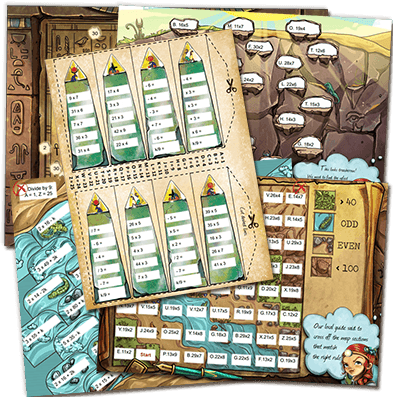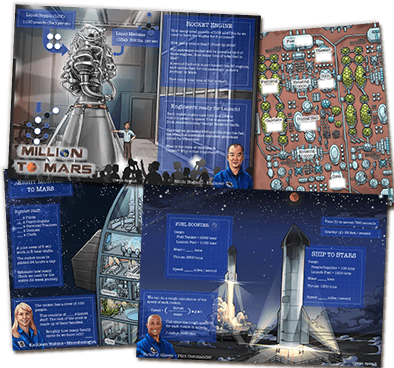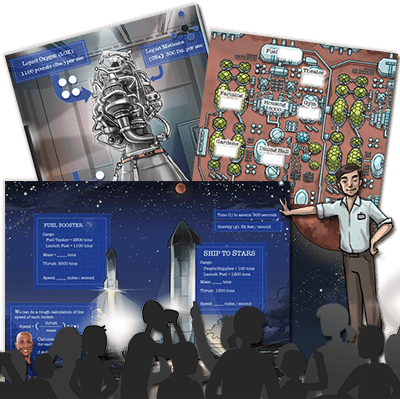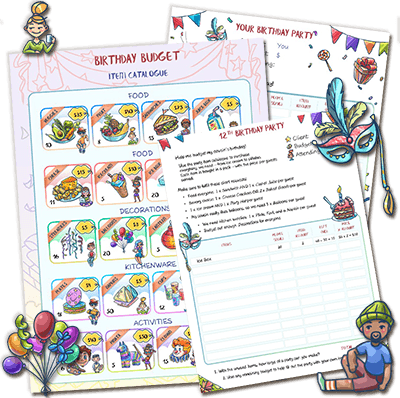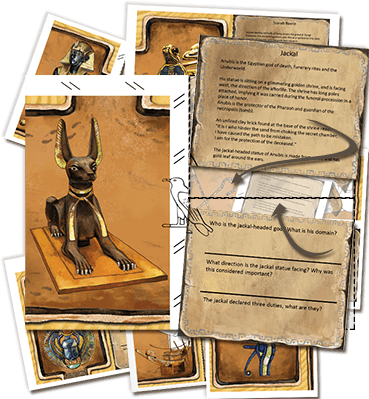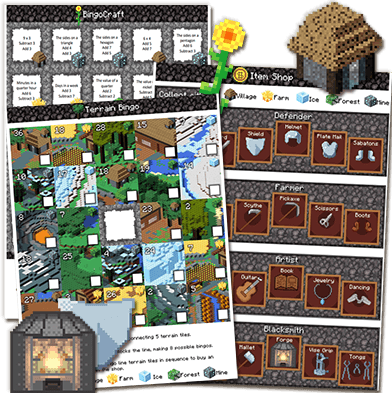Upgrade Your Teaching Toolbelt with These Free Downloadable 'Making Inferences' Worksheets
Want to teach your students to think for themselves? These free worksheets are a great place to start!

Today's special at the cafe: a guide to teaching inferences and a free worksheet set!
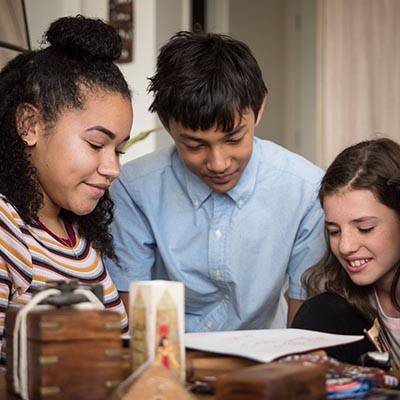
Our best tip? Reignite creative learning and develop critical thinking using a classroom escape room game!
If you've come to us for a boost with your next lesson, we're here to make sure you have everything you need to get the ball rolling.
It may be tricky to introduce students to a new concept of abstract thinking, and teaching inferences means just that: helping your students develop a skill rather than taking in concrete information. If that's the case, let's get you covered.
We'll give you a breakdown of:
- what inferences are
- why they're important
- and some tips and resources that we hope will help you get your class (or plucky homeschool kid!) onboard and having fun as they pick up the knack for this important lesson.
Connecting the Dots

In a nutshell, inferences are really just informed conclusions. They're the ideas we get when we combine the information put in front of us with what we already know. As the grown-ups in the room, we make them automatically, all the time; we might have even forgotten what it was like when they weren't second-nature!
The art of making inferences is the art of connecting dots, reading between lines, putting pieces together – whatever metaphor helps it click! This reasoning tool comes in handy for scenarios where the full context or relationship of ideas isn't complete or fully spelled out. Inferences occur when we use memory, deduction, and imagination to gather insight from a situation, whether that's from a piece of text or our own surroundings. We usually have to make an intuitive leap and work out how the existing pieces of information relate to each other, or draw on our background knowledge to fill in the rest.
Teaching kids what they are and how to practice that kind of thinking will help them recognize situations where that's needed, how to support their ideas with solid reasoning, and how to become critical thinkers and readers.
Reading Between the Lines

The combined narrative and problem-solving elements of escape room games makes them naturally perfect for teaching inferences!
Inferences are incredible reading comprehension tools, both in their own right and as stepping stones to more complex forms of reasoning. Outside of reading, they're also part of critical thinking patterns that we come to use constantly as an instinctual life skill.
There are also a number of valuable skills packed into the process that show up in every context. These include:
- distinguishing information that is stated directly from information that is implied
- how to notice events or objects that seem out of place and to find reasons for them
- combining intuitive reasoning with previous experience
- supporting conclusions with a line of reasoning or logical framework
By recognizing consistency and coherence in a text, we can identify solid reasoning in an article or piece of nonfiction. For instance, there may be gaps between information, or places where the author leads the reader to a conclusion that isn't properly supported. In fiction, we use make inferences about the goals and motives of the characters, the cause and effect of their actions, and the progression of the plot. This also becomes part of recognizing story structure and the conventions used in different genres. You may find that kids who read a lot and like to keep track of patterns have a particular knack for them!
These same tools apply for our interactions with other people and situations in the day-to-day, since we're always trying to make solid decisions when we have a limited amount of information. We use our experiences with the moods and traits of the people around us to better understand how they might respond in the future.
All in all, inferences are an integral part our ability to put information together and make educated guesses about the things we don't yet understand.
By pointing out what inferences are and giving kids a method to practice making them, we set them up with a foundation for some of the more complex forms of reasoning that follow.
Putting the Pieces Together

These expressions like 'connecting the dots' don't have to just be turns of phrase. You can use them as vivid examples to introduce the idea by grounding the concept into something a little more accessible, especially for younger students. By comparing the process to playing connect-the-dots or putting together a jigsaw puzzle, where the inferences are the pictures that are revealed when they've finished, you can give them a visual or tangible toehold in the concept. This may intercept them before they run into a mental block from a nebulous set of new words that don't mean anything to them yet.
Since there are lots of opportunities to practice making inferences in all sorts of places, you can have your pick of methods based on what works best for your students and their ability levels. Visuals work great for practicing as well as for introducing the concept, too! Using pictures to let them find clues and extrapolate narratives is a great way to let kids work on inferences in a way that's natural and engaging.
You can also start out by discussing examples of inferences in day-to-day situations, asking them what they know and what they don't understand about it yet. Then, prompt them to identify clues and relevant background knowledge. Encourage them to come up with ideas and see if they make sense based on the clues. For example:
- "My Mom asked me to put this stack of towels in the basket by the door. I wonder why she wants them to go there."
- "I know that our dog will track muddy paw-prints through the house when it's a rainy day. I know that she doesn't like how much work it is to clean that up."
- "I think she wants to keep the towels there so it'll be easier to dry his paws off."
A simple worksheet with a similar framework will do nicely for practicing inferences through text. Keeping things intuitively laid-out will help reinforce the concept by encouraging students to gather information and place their ideas in a sequence. Making the example text fun and accessible will keep them engaged and help them recognize similar situations in their life or other reading. We've got some free downloadable ones that you can use in your classroom or homeschool lesson.


Since this is a form of higher-level thinking that consistently grows more complex with new and nuanced situations, we recommend materials that are geared towards the 3rd - 8th grade levels, and working your way up from simple scenarios to more complex pieces of text as they go along. Kid-friendly mysteries and detectives stories are great for examples of inferential thinking! They allow readers to follow along as their main characters make inferences, such as:
- "The detective found a plane ticket with the name of her suspect and the time of his flight."
- "It proved that he flew out of town on the day of the robbery."
- "Therefore, he couldn't have been the one to do it."
These stories will also prompt readers to make guesses of their own before they reach the end of the case.
While you can guide students towards particular conclusions to show how some inferences are supported and other guesses might not be, keeping your source material open-ended leaves them free to explore the possibilities. It also gives them a chance to show their thought processes and explain how they reached their conclusions.
Practice Makes Perfect!

We have some free downloadable worksheets for your classroom or homeschool lesson. Each one is set up with a few sets of neat, thought-provoking bits of text to set up a short narrative and offer information. They're followed by a set of questions that prompt the students not only to offer their conclusions, but to back them up with their reasoning and explain how they reached them. There are several to choose from, so you can pick the ones that will work best for your class.
Thanks for making us part of your day at the Teacher's Cafe! We hope this helps you in create an interesting and rewarding lesson for you and your students to tackle together!
It's Time To Level-Up Your Next Lesson!
Wake up snoozing students by transforming your next lesson into an adventure they'll lOVE.
These printable classroom activities 'gamify' learning to make it FUN!
Guaranteed to ignite your students imagination, develop critical thinking, and take all the stress off your shoulders!
Making Inferences Worksheet
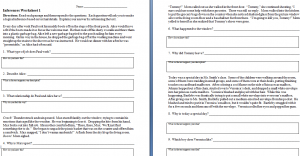 Inferences Worksheets - Three excellent worksheets to allow students the practice they need to make inferences. In each worksheet students read the passages and then answer the inferential questions. Suggested reading level are grades 4 to 8.
Inferences Worksheets - Three excellent worksheets to allow students the practice they need to make inferences. In each worksheet students read the passages and then answer the inferential questions. Suggested reading level are grades 4 to 8.
CCSS.ELA-Literacy.CCRA.R.1 - Read closely to determine what the text says explicitly and to make logical inferences from it; cite specific textual evidence when writing or speaking to support conclusions drawn from the text.
Key Ideas and Details:
CCSS.ELA-Literacy.RL.4.1 -Refer to details and examples in a text when explaining what the text says explicitly and when drawing inferences from the text.
CCSS.ELA-Literacy.RL.5.1 -Quote accurately from a text when explaining what the text says explicitly and when drawing inferences from the text.
CCSS.ELA-Literacy.RL.6.1 -Cite textual evidence to support analysis of what the text says explicitly as well as inferences drawn from the text.
CCSS.ELA-Literacy.RL.7.1 -Cite several pieces of textual evidence to support analysis of what the text says explicitly as well as inferences drawn from the text.
CCSS.ELA-Literacy.RL.8.1 -Cite the textual evidence that most strongly supports an analysis of what the text says explicitly as well as inferences drawn from the text.
CCSS.ELA-Literacy.RL.9-10.1 -Cite strong and thorough textual evidence to support analysis of what the text says explicitly as well as inferences drawn from the text.
CCSS.ELA-Literacy.RL.11-12.1 - Cite strong and thorough textual evidence to support analysis of what the text says explicitly as well as inferences drawn from the text, including determining where the text leaves matters uncertain.
